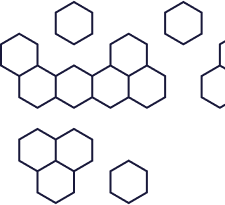Veilux: A Privacy-Centric Web3 Infrastructure Platform
📊 Quick Facts
- Token Name: Veilux
- Total Supply: 210 Billion
- Consensus: Proof of Stake
- Launch: Q2 2026
- Core Tech: FHE + ZKP
- Network: Veilux Chain
- Governance: VeiluxDAO
- Security: Quantum-Safe
Veilux is a next-generation Web3 infrastructure platform focused on end-to-end data privacy and security. It leverages breakthrough cryptography to enable trustless, encrypted computation on blockchain data, positioning itself as a foundational layer for a truly secure and decentralized internet.
Executive Summary
Veilux is introduced as a serious Web3 infrastructure platform designed to solve critical data privacy challenges in decentralized systems. The platform's core innovation lies in using Fully Homomorphic Encryption (FHE) – a technology often hailed as the "Holy Grail" of cryptography – alongside complementary cryptographic techniques to ensure that all data remains encrypted at rest, in transit, and even during computation.
By adopting quantum-resistant lattice-based encryption standards, Veilux enables computations on encrypted data without ever exposing sensitive information. This represents a paradigm shift toward a Zero-Trust Internet, where neither the network nor any node needs to be implicitly trusted with raw data.
Veilux's mission is to empower users and enterprises with full control over their data through encryption-first architecture. The platform provides a bespoke blockchain network ("Veilux Network") that integrates privacy by default, ensuring compliance with emerging data protection standards while maintaining decentralized trustlessness. The native utility token of the network (Veilux) powers this ecosystem by incentivizing secure participation and enabling governance.
Mission and Vision
Mission
Veilux's mission is to establish a zero-trust digital ecosystem in which data remains private and secure at all times. In practical terms, this means enabling a world where personal and sensitive data can be utilized in decentralized applications without ever being exposed – even to the infrastructure running those applications. Veilux strives to provide individuals and organizations with digital sovereignty, ensuring they maintain full control over their data while harnessing the power of Web3.
Vision
Veilux envisions a fully encrypted Web3 future. The project was born from recognizing two converging trends: (1) the growing concern that even though over half of modern websites have adopted HTTPS, user data still often becomes accessible to service providers and vulnerable to breaches, and (2) the rise of decentralized architectures which, while removing centralized custodians, expose new attack surfaces for data leaks and manipulation.
In this envisioned future, privacy-by-design will be the norm for blockchain applications – from decentralized finance to social networks and AI-driven dApps – all running on encrypted data without compromising functionality. Veilux will serve as a foundational privacy layer for Web3, much like an "HTTPS of blockchain," that developers can rely on to build trustless yet confidential applications.
Core Technology: Data Privacy, Security, and Network Design
At the heart of Veilux is a novel cryptographic network architecture that ensures data privacy and security without sacrificing the functionality of decentralized applications. The core technology can be outlined in several key components:
Fully Homomorphic Encryption (FHE)
Veilux leverages FHE to enable computation on encrypted data directly. This means that nodes in the Veilux Network can perform calculations (such as executing smart contract logic or data analytics) without decrypting the underlying data. As a result, sensitive information remains encrypted end-to-end. FHE is a groundbreaking approach that preserves privacy during use, allowing Veilux to process data while keeping it confidential.
Zero-Knowledge Proofs (ZKPs) and Verification
In tandem with FHE, Veilux employs ZKPs to prove facts about encrypted transactions or computations without revealing the data itself. For example, a user could prove they have sufficient funds for a transaction or that a computation was performed correctly, all without exposing the underlying values. These cryptographic proofs ensure the integrity and correctness of network operations.
Secure Network Design (Veilux Chain)
Veilux introduces its own blockchain network optimized for privacy. The Veilux Chain uses a Proof-of-Stake (PoS) consensus mechanism augmented with cryptographic enhancements. Validator nodes stake Veilux tokens to secure the network and are responsible for processing encrypted transactions. The consensus protocol has been tailored to handle FHE-encrypted transactions efficiently, using techniques like batching and layer-2 processing to mitigate the typically heavy computational load of homomorphic operations.
Hybrid Cryptographic Modules
Veilux integrates multiple privacy technologies to achieve defense-in-depth. In addition to FHE and ZKPs, it supports Secure Multiparty Computation (MPC) for scenarios where multiple parties jointly compute a function without exposing their inputs, and Trusted Execution Environments (TEE) (secure enclaves) for off-chain computation when needed. By combining these, Veilux ensures that even if one layer has limitations, other layers can compensate.
Quantum-Resistance
Recognizing the long-term threat of quantum computing to classical encryption, Veilux's cryptography is built on post-quantum algorithms. Specifically, the lattice-based schemes underlying FHE in Veilux are chosen for their resistance to quantum attacks, aligning with standards recommended by NIST (National Institute of Standards and Technology) in 2024 for post-quantum encryption. This forward-looking stance means Veilux's security is designed to hold strong even as computing paradigms evolve.
Token Utility and Economic Model
Veilux's native token, Veilux, is the cornerstone of the platform's economy and governance. Veilux is designed as a utility and governance token that aligns incentives across all participants of the Veilux ecosystem.
Key Utilities of Veilux:
Network Security & Staking
Veilux is used to secure the Veilux Network through a Proof-of-Stake mechanism. Participants (validators and delegators) stake their Veilux tokens to validate encrypted transactions and maintain the blockchain. Honest stakers are rewarded with block rewards and transaction fees (paid in Veilux), while malicious actors can have their stake slashed for misbehavior.
Payment for Encrypted Computation & Storage
In Veilux, performing complex operations on encrypted data is computationally intensive. Users and applications pay fees in Veilux for utilizing the network's resources – whether it's executing a confidential smart contract, running an encrypted AI algorithm on-chain, or storing data in Veilux's encrypted ledger. These fees are distributed to validators who provide the computation and storage power, creating a circular economy where token value is tied to platform usage.
Governance and Voting
Veilux holders can participate in Veilux's governance (VeiluxDAO). Each token typically represents one vote in on-chain governance proposals, enabling the community to influence key decisions such as protocol upgrades, parameter changes, treasury expenditures, and development roadmaps. By locking (staking) tokens for governance, participants may receive additional weight or rewards, fostering long-term commitment.
Incentives and Ecosystem Growth
A portion of Veilux supply is reserved for ecosystem incentives – such as rewards for developers who create popular privacy-preserving dApps on Veilux, bug bounties for finding vulnerabilities, or user growth programs like airdrops and liquidity mining. These incentive programs are designed to bootstrap network effects and drive adoption.
Economic Model and Tokenomics
The total supply of Veilux is fixed at 210,000,000,000 tokens to establish predictability. The distribution is allocated to balance development needs, community growth, and fairness:
Token Distribution
- Community & Ecosystem (40%): Airdrops, user incentives, and ecosystem development
- Team & Advisors (18%): 4-year vesting with 12-month cliff
- Private Sale (15%): Early investors with 2-year vesting and 6-month cliff
- Treasury (10%): Long-term project needs and reserves
- Development (7%): Research and protocol development
- Public Sale (5%): Community token sale events
- Liquidity (5%): Exchange liquidity provision
Governance Framework
Veilux is governed as a decentralized autonomous organization (DAO), ensuring that the project's evolution reflects the collective will of its community and stakeholders. The governance framework is designed to be transparent, inclusive, and accountable.
VeiluxDAO Structure
All Veilux token holders are members of the VeiluxDAO. The DAO operates through smart contracts that allow for proposal submission, discussion, voting, and implementation of decisions. Each token typically equates to one vote, with quorum and supermajority thresholds ensuring widespread support for major changes.
Proposal Process
Community members with a minimum threshold of tokens can submit governance proposals including network upgrades, parameter changes, treasury expenditures, partnerships, or governance process modifications. Proposals undergo a defined discussion period before entering a voting window.
Voting & Execution
Voting is conducted on-chain with options for Yes, No, or Abstain. Proposals require both quorum (minimum participation) and approval thresholds to pass. Critical proposals like consensus rule changes require supermajority approval. Passed proposals can trigger automatic execution via smart contracts or bind the Foundation to execute off-chain actions.
Development Roadmap
Veilux's roadmap outlines the development milestones and strategic phases from inception through full maturity, providing stakeholders with clear expectations and timelines.
📅 Key Milestones
Q4 2025 – Phase 1: Foundation and Testnet Launch
- Whitepaper & Documentation Release
- Prototype and Internal Testnet
- Community Building Initiatives
- Veilux Advocate Program Launch
Q1 2026 – Phase 2: Public Testnet "Veilux Dawn"
- Public Testnet Goes Live
- Developer SDK & Tools Release
- Preliminary Security Audits
- Testnet Incentive Program ("Pioneer Program")
Q2 2026 – Phase 3: Mainnet Launch "Veilux Genesis"
- Veilux Mainnet v1.0 Launch
- Token Generation Event (TGE)
- Foundation & Governance Setup
- Initial dApp and Partnership Launches
Q3-Q4 2026 – Phase 4: Ecosystem Expansion
- Full Smart Contract Support
- Performance Improvements & Layer-2 Solutions
- Cross-Chain Bridge Implementation
- VeiluxDAO Full Empowerment
- Compliance Features Development
2027 and Beyond – Phase 5: Global Adoption
- Mass Adoption Campaigns
- Technical Leadership in Cryptography
- Self-Sustainability Achievement
- Continual Innovation & Improvement
Risk Factors and Compliance
Building a platform at the intersection of advanced cryptography and blockchain networks requires careful attention to compliance and potential risks. Veilux is committed to transparency about the uncertainties involved.
⚠️ Important Disclaimers
- No Investment Advice: This document is for informational purposes only and does not constitute investment advice or a solicitation to buy securities.
- Technology Risks: Veilux's complex cryptographic technology could harbor bugs, vulnerabilities, or performance limitations that may affect network security or scalability.
- Regulatory Risk: The regulatory environment for privacy technologies and cryptocurrencies is evolving and may impact Veilux's operations or token usage.
- Market Risk: Token values can be extremely volatile and may be influenced by factors beyond the project's control.
- Adoption Risk: Success depends on user and developer adoption, which cannot be guaranteed.
Regulatory Compliance
Veilux recognizes the importance of global regulatory frameworks and will align with regulations such as MiCA (Markets in Crypto-Assets) and data privacy laws like GDPR. The Veilux Foundation will proactively engage with legal counsel to ensure compliance across jurisdictions.
Privacy and Compliance Balance
While Veilux provides data encryption by default, it will explore compliance-friendly designs such as selective disclosure and audit capabilities for regulated entities, striking a balance between individual privacy rights and legitimate regulatory concerns.
🚀 Join the Privacy Revolution
Veilux is more than a protocol – it's a commitment to a safer, smarter internet. Together, we'll make privacy a fundamental feature of Web3.
Disclaimer: This whitepaper is for informational purposes only. Cryptocurrency investments carry significant risks. Please conduct your own research and consider your risk tolerance before participating in any token-related activities.
© 2025 Veilux Network. All rights reserved. | Version 1.0 | Last Updated: December 2025
📈 Token Distribution
| Allocation Category | Percentage | Token Amount | Initial Unlock | Vesting Period | Description |
|---|---|---|---|---|---|
| Community | 40% | 84B | 15% | 4Y Linear | Rewards & Grants |
| Team | 18% | 37.8B | 10% | 4Y, 1Y Cliff | Core Team |
| Private Sale | 15% | 31.5B | 20% | 2Y, 6M Cliff | Early Investors |
| Treasury | 10% | 21B | 10% | 5Y Linear | Long-term Dev |
| Development | 7% | 14.7B | 15% | 3Y Linear | R&D |
| Public Sale | 5% | 10.5B | 30% | Immediate | Public |
| Liquidity | 5% | 10.5B | 25% | Immediate | DEX/CEX |
Governance
Veilux is governed as a decentralized autonomous organization (DAO), ensuring that the project's evolution is not in the hands of any single entity but rather the collective will of its community and stakeholders. The governance framework is designed to be transparent, inclusive, and accountable, leveraging the Veilux token to align voting power with those invested in the network's long-term health.
VeiluxDAO
All Veilux token holders are effectively members of the Veilux Decentralized Autonomous Organization (VeiluxDAO). The DAO operates through smart contracts on the Veilux blockchain that allow for proposal submission, discussion, voting, and implementation of decisions. Each token typically equates to one vote (1 Veilux = 1 vote), meaning holders with more tokens have greater influence, but the system is designed to encourage broad participation rather than plutocracy.
Proposal Process
Any community member with a certain minimum threshold of tokens can submit a governance proposal. Proposals could include network upgrades, changes to parameters, treasury expenditure requests, partnerships approvals, or changes to the governance process itself. Once a proposal is submitted, a defined discussion period begins where the proposal is visible on Veilux's governance portal and open for debate.
Roadmap
Veilux's roadmap lays out the development milestones and strategic phases from the current inception through full maturity:
Q4 2025 – Phase 1: Foundation and Testnet Launch
- Whitepaper & Documentation Release
- Prototype and Internal Testnet
- Community Building Initiatives
Q1 2026 – Phase 2: Public Testnet "Veilux Dawn"
- Public Testnet Live
- Developer SDK & Tools
- Preliminary Audits
- Testnet Incentive Program
Q2 2026 – Phase 3: Mainnet Launch "Veilux Genesis"
- Veilux Mainnet v1.0
- Token Generation Event (TGE)
- Foundation & Governance Setup
- Initial dApp and Partnership Launches
Q3–Q4 2026 – Phase 4: Ecosystem Expansion
- Full Smart Contract Support
- Performance Improvements
- Cross-Chain Bridge
- VeiluxDAO Empowerment
- Compliance Features
2027 and Beyond – Phase 5: Maturation and Global Adoption
- Mass Adoption Efforts
- Technical Leadership
- Self-Sustainability
- Continual Improvement
Compliance, Legal Disclaimers, and Risks
Legal Disclaimers
No Investment Advice: This document (Veilux Whitepaper) is for informational purposes only. It does not constitute an offer to sell, or a solicitation of an offer to buy, any securities, commodities, or other financial instruments.
No Guarantees: Veilux and its contributors do not guarantee any financial returns or intrinsic value of the Veilux token. The future value of Veilux (if any) will depend on market dynamics and the adoption of the Veilux platform.
Technology Provided "As Is": The Veilux platform, in its initial and subsequent releases, is provided on an "as is" and "as available" basis. There is no warranty by the team or its associates that the platform will be uninterrupted, error-free, or secure.
Risk Factors
Veilux, like any ambitious technology project, faces a variety of risks including:
- Technical Risk: Complex cryptographic implementations may harbor bugs or vulnerabilities
- Market Risk: Token value volatility and market dynamics
- Regulatory Risk: Evolving legal frameworks for privacy technologies
- Adoption Risk: Market acceptance and developer ecosystem growth
- Security Risk: User-level security and key management challenges
- Operational Risk: Development delays and team execution
- Quantum Risk: Long-term advancement of quantum computing
Conclusion
Veilux represents a significant advancement in Web3 infrastructure, providing the cryptographic foundations necessary for a truly private and secure decentralized internet. Through innovative use of FHE, ZKPs, and other cutting-edge cryptographic techniques, Veilux enables computation on encrypted data while maintaining complete privacy and security.
The platform's comprehensive approach to tokenomics, governance, and ecosystem development ensures sustainable growth and community ownership. With a clear roadmap toward mainnet launch and beyond, Veilux is positioned to become the foundational privacy layer for the next generation of Web3 applications.
By participating in the Veilux ecosystem, users, developers, and stakeholders join a movement toward a more private, secure, and user-controlled internet – one where privacy is not an afterthought, but the fundamental design principle.
Get in Touch with Veilux






